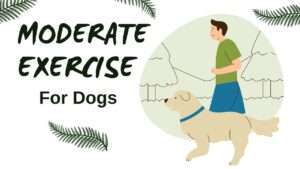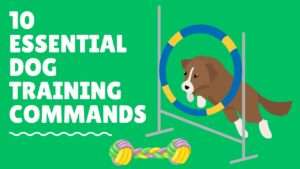In recent years, the concept of yoga has expanded beyond human practitioners to include our furry friends as well. Dog yoga, also known as “doga,” is gaining popularity as a fun and beneficial activity for both dogs and their owners.
But what exactly is dog yoga, and how can you and your canine companion get started? Let’s dive into the world of dog yoga and explore everything you need to know to embark on this unique journey together.
Contents Overview
What is Dog Yoga?
Dog yoga, or doga, is a practice that combines traditional yoga techniques with the presence of dogs. It involves gentle stretching, massage, and relaxation exercises that incorporate dogs into various yoga poses. The aim is to create a bonding experience between owner and pet while promoting relaxation and well-being for both.
Benefits of Dog Yoga:
Dog yoga, or doga, offers a myriad of benefits for both dogs and their owners. Let’s explore these benefits in detail:
- Bonding: Doga strengthens the bond between dogs and their owners through shared experiences and physical touch. The act of practicing yoga together fosters a deeper connection and understanding between the two, enhancing the relationship.
- Physical Health: The gentle stretching, massage, and movement involved in dog yoga contribute to improved physical health for dogs. Some specific benefits include:
- Flexibility: Doga helps to increase a dog’s flexibility by gently stretching their muscles and joints, promoting a better range of motion and mobility.
- Muscle Strength: The various poses and movements in dog yoga can help to strengthen a dog’s muscles, particularly in the legs, core, and back.
- Joint Health: By encouraging gentle movement and stretching, doga can help to maintain the health of a dog’s joints and prevent stiffness or discomfort, especially in older dogs or those with arthritis.
- Balance and Coordination: Practicing yoga poses that require balance and coordination can improve a dog’s proprioception and overall body awareness.
- Mental Stimulation: Engaging in dog yoga provides mental stimulation for dogs, keeping their minds sharp and active. Dogs must focus and concentrate on the yoga poses, which can help to alleviate boredom and prevent behavioral issues.
- Stress Relief: Just like humans, dogs can experience stress and anxiety. Doga offers relaxation techniques, such as deep breathing and gentle massage, that can help to calm the nervous system and promote relaxation in both dogs and their owners. This can be especially beneficial for dogs who are prone to anxiety or nervousness in certain situations.
- Socialization: Doga classes often involve interaction with other dogs and owners, providing opportunities for socialization and building confidence in dogs. This can be particularly helpful for shy or fearful dogs who may benefit from positive experiences with other dogs in a controlled environment.
- Improved Communication: Practicing yoga together encourages communication between dogs and their owners. Owners learn to read their dog’s body language and cues more effectively, enhancing their ability to communicate and understand each other’s needs.
- Emotional Connection: The shared experience of practicing yoga together can deepen the emotional connection between dogs and their owners. It provides a unique opportunity for bonding and shared relaxation, fostering a sense of trust and companionship.
Getting Started with Dog Yoga:
Embarking on the journey of dog yoga, or doga, can be a rewarding experience for both you and your furry friend. Here’s a comprehensive guide to help you get started:
- Consult Your Vet:
Before diving into dog yoga, it’s essential to consult your veterinarian to ensure that it’s safe and appropriate for your dog. This is especially important if your dog has any pre-existing health conditions or physical limitations that may affect their ability to participate in yoga.
- Choose the Right Environment:
Select a quiet, comfortable space with enough room for both you and your dog to move around freely without distractions. Ideally, choose a location where you and your dog feel relaxed and at ease, such as a quiet room in your home or a peaceful outdoor area.
- Start Slow:
Introduce your dog to yoga gradually, starting with simple stretches and poses. Begin with basic movements that your dog is comfortable with, and gradually incorporate more advanced poses as they become more familiar with the practice. Pay attention to your dog’s comfort level and stop if they show signs of stress or discomfort.
- Use Treats and Positive Reinforcement:
Encourage your dog to participate in dog yoga by using treats and positive reinforcement. Reward them for their efforts and progress, and make the experience enjoyable and rewarding for both of you. Positive reinforcement will help create a positive association with dog yoga and motivate your dog to continue practicing.
- Be Patient:
Dogs may take some time to adjust to the practice of yoga, so be patient and understanding as you guide them through the poses. Each dog is unique, and it may take some trial and error to find what works best for your furry friend. Remember to praise their efforts and progress along the way.
- Practice Regularly:
Consistency is key when it comes to dog yoga. Try to incorporate regular yoga sessions into your routine to maximize the benefits for both you and your dog. Aim for short, frequent sessions rather than long, infrequent ones, as dogs have shorter attention spans and may become bored or restless during extended sessions.
Tips for Practicing Dog Yoga:
Practicing dog yoga, or doga, can be a fun and rewarding experience for both you and your furry friend. Here are some valuable tips to help you make the most out of your dog yoga sessions:
- Keep Sessions Short and Engaging:
Dogs have shorter attention spans than humans, so it’s important to keep your dog yoga sessions short and engaging to prevent boredom. Aim for sessions that last between 10 to 15 minutes initially, and gradually increase the duration as your dog becomes more comfortable with the practice.
- Watch for Signs of Discomfort or Stress:
Pay close attention to your dog’s body language and watch for signs of discomfort or stress during yoga sessions. Signs of distress may include panting, pacing, whining, or attempting to escape from the yoga mat. If you notice any of these signs, stop the session immediately and try again later.
- Start with Basic Poses:
Beginner poses such as “downward dog,” “upward dog,” and “child’s pose” are excellent starting points for dog yoga. These poses are relatively simple and easy for dogs to understand, making them ideal for beginners. Once your dog is comfortable with these basic poses, you can gradually introduce more advanced poses.
- Use Treats and Positive Reinforcement:
Encourage your dog to participate in dog yoga by using treats and positive reinforcement. Reward your dog with treats and praise for completing poses or following your cues. Positive reinforcement will help create a positive association with dog yoga and motivate your dog to continue practicing.
- Be Mindful of Your Dog’s Physical Limitations:
Every dog is unique, and it’s essential to be mindful of your dog’s physical limitations when practicing yoga together. Avoid forcing your dog into poses that may cause discomfort or strain, and be prepared to modify poses as needed to accommodate your dog’s abilities. Always prioritize your dog’s safety and well-being during yoga sessions.
- Incorporate Calming Techniques:
To create a peaceful and relaxing atmosphere during dog yoga sessions, incorporate calming techniques such as deep breathing and gentle massage. Take slow, deep breaths to help relax both you and your dog, and use gentle massage techniques to soothe tired muscles and promote relaxation.
- Have Fun and Be Patient:
Above all, remember to have fun and enjoy the experience of practicing yoga together with your furry friend. Dog yoga is meant to be a fun activity that strengthens the bond between you and your dog. Be patient with your dog as they learn and grow in their practice, and celebrate their progress along the way.
Bottom Line
Dog yoga offers a unique opportunity for owners to bond with their canine companions while promoting physical and mental well-being for both parties involved. By following the tips and guidelines outlined in this guide, you can embark on a rewarding journey of dog yoga together with your furry friend. So roll out your yoga mat, grab some treats, and get ready to downward dog with your dog!



































+ There are no comments
Add yours